Anjoo Bhatnagar
Child PalmID: Contactless Palmprint Recognition
Dec 14, 2022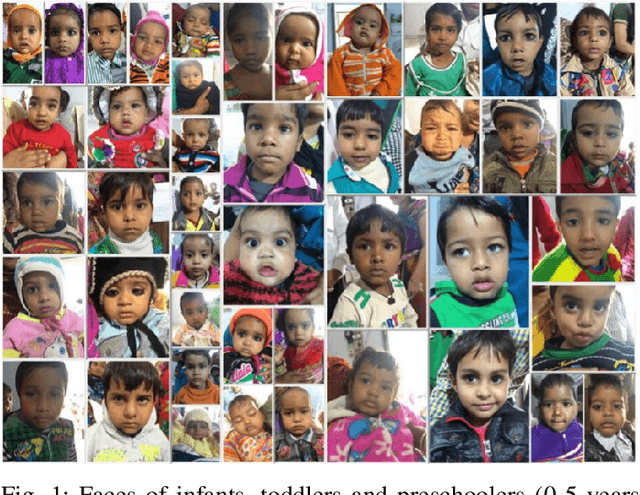
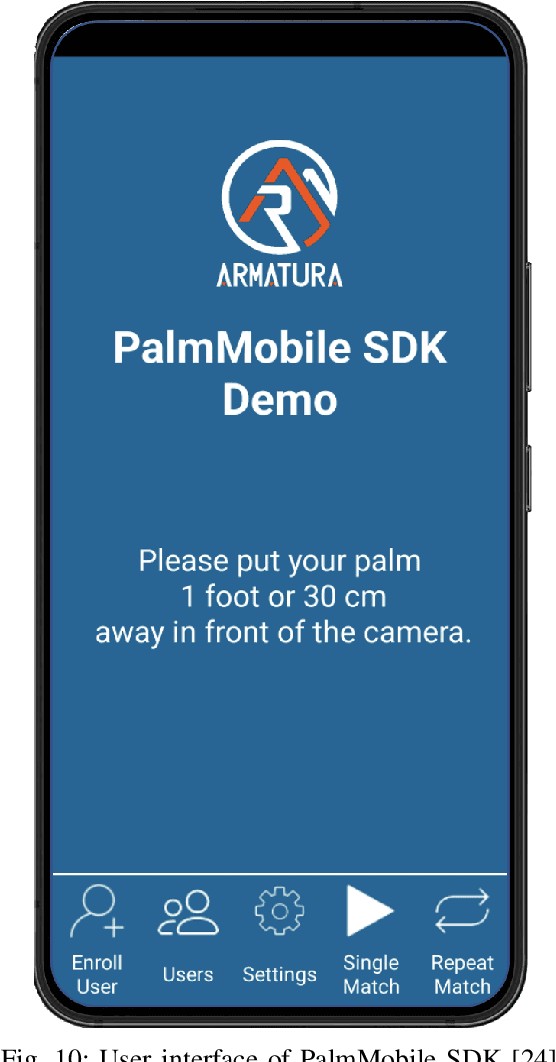
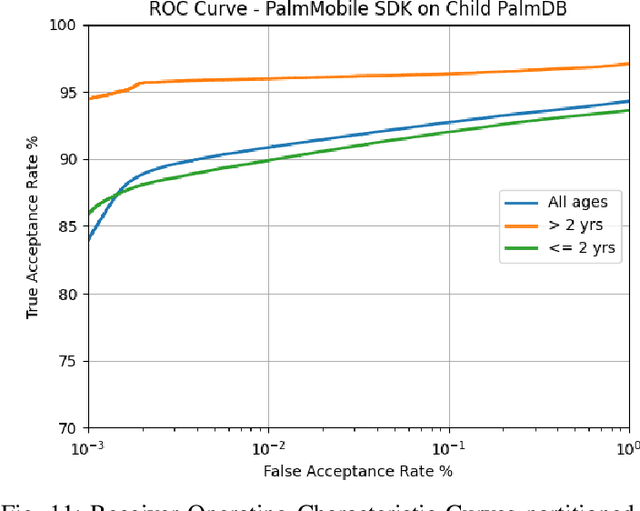
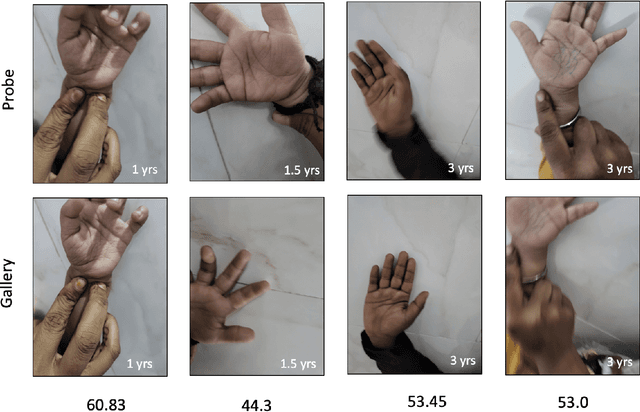
Abstract:Developing and least developed countries face the dire challenge of ensuring that each child in their country receives required doses of vaccination, adequate nutrition and proper medication. International agencies such as UNICEF, WHO and WFP, among other organizations, strive to find innovative solutions to determine which child has received the benefits and which have not. Biometric recognition systems have been sought out to help solve this problem. To that end, this report establishes a baseline accuracy of a commercial contactless palmprint recognition system that may be deployed for recognizing children in the age group of one to five years old. On a database of contactless palmprint images of one thousand unique palms from 500 children, we establish SOTA authentication accuracy of 90.85% @ FAR of 0.01%, rank-1 identification accuracy of 99.0% (closed set), and FPIR=0.01 @ FNIR=0.3 for open-set identification using PalmMobile SDK from Armatura.
Infant-ID: Fingerprints for Global Good
Oct 07, 2020
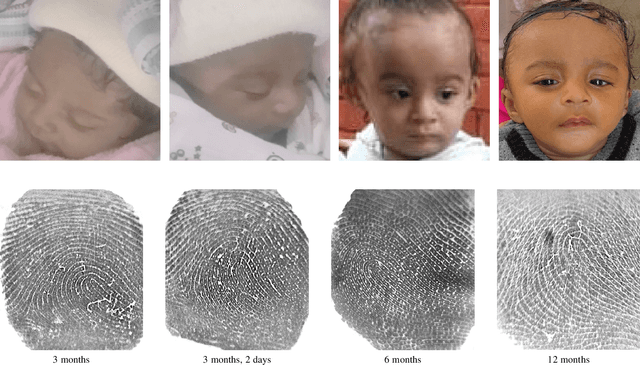
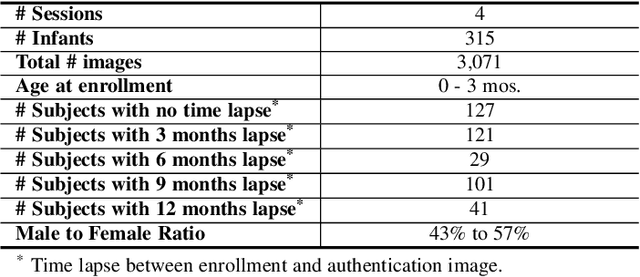

Abstract:In many of the least developed and developing countries, a multitude of infants continue to suffer and die from vaccine-preventable diseases and malnutrition. Lamentably, the lack of official identification documentation makes it exceedingly difficult to track which infants have been vaccinated and which infants have received nutritional supplements. Answering these questions could prevent this infant suffering and premature death around the world. To that end, we propose Infant-Prints, an end-to-end, low-cost, infant fingerprint recognition system. Infant-Prints is comprised of our (i) custom built, compact, low-cost (85 USD), high-resolution (1,900 ppi), ergonomic fingerprint reader, and (ii) high-resolution infant fingerprint matcher. To evaluate the efficacy of Infant-Prints, we collected a longitudinal infant fingerprint database captured in 4 different sessions over a 12-month time span (December 2018 to January 2020), from 315 infants at the Saran Ashram Hospital, a charitable hospital in Dayalbagh, Agra, India. Our experimental results demonstrate, for the first time, that Infant-Prints can deliver accurate and reliable recognition (over time) of infants enrolled between the ages of 2-3 months, in time for effective delivery of vaccinations, healthcare, and nutritional supplements (TAR=95.2% @ FAR = 1.0% for infants aged 8-16 weeks at enrollment and authenticated 3 months later).
Biometrics for Child Vaccination and Welfare: Persistence of Fingerprint Recognition for Infants and Toddlers
Apr 17, 2015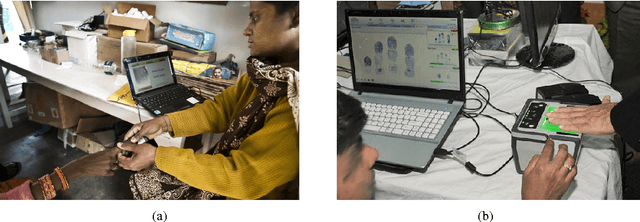

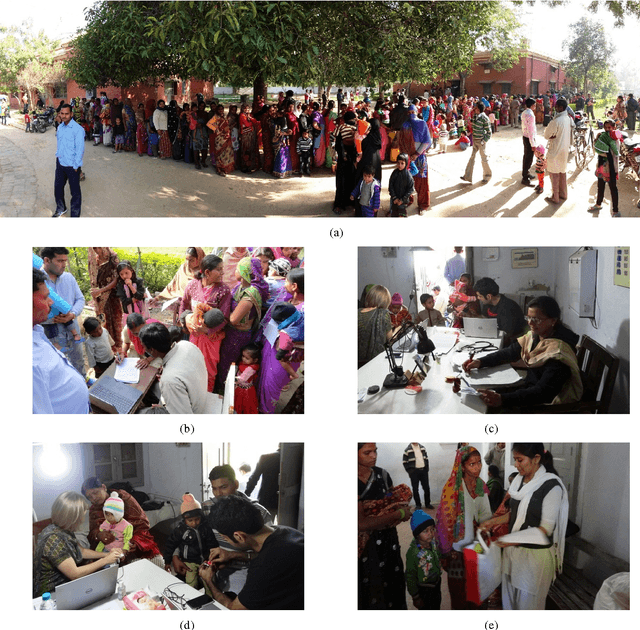
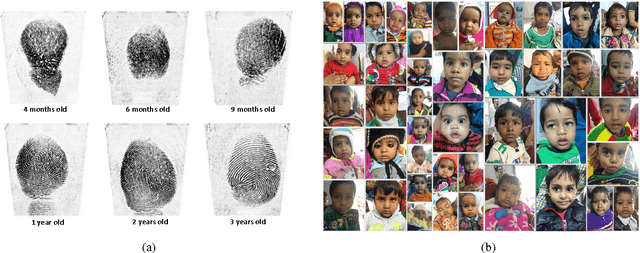
Abstract:With a number of emerging applications requiring biometric recognition of children (e.g., tracking child vaccination schedules, identifying missing children and preventing newborn baby swaps in hospitals), investigating the temporal stability of biometric recognition accuracy for children is important. The persistence of recognition accuracy of three of the most commonly used biometric traits (fingerprints, face and iris) has been investigated for adults. However, persistence of biometric recognition accuracy has not been studied systematically for children in the age group of 0-4 years. Given that very young children are often uncooperative and do not comprehend or follow instructions, in our opinion, among all biometric modalities, fingerprints are the most viable for recognizing children. This is primarily because it is easier to capture fingerprints of young children compared to other biometric traits, e.g., iris, where a child needs to stare directly towards the camera to initiate iris capture. In this report, we detail our initiative to investigate the persistence of fingerprint recognition for children in the age group of 0-4 years. Based on preliminary results obtained for the data collected in the first phase of our study, use of fingerprints for recognition of 0-4 year-old children appears promising.
 Add to Chrome
Add to Chrome Add to Firefox
Add to Firefox Add to Edge
Add to Edge